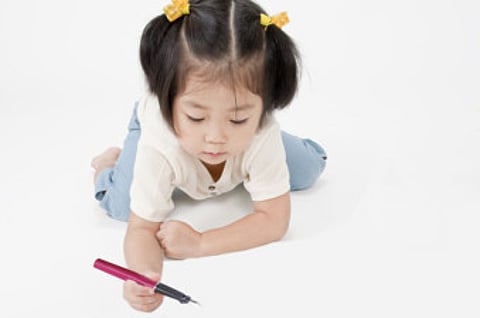The write stuff
Japanese children have fallen in love with writing with cheap fountain pens

TOKYO
Contrary to their trad-itional image as an expensive writing implement, fountain pens with various fun and practical designs have recently appeared on the market, and many people are enjoying using them casually. How about writing messages with a fountain pen on your Christmas and New Year’s greeting cards?
Fountain pens are distinctive in that they do not require strong pressure to write. They give a unique and tasteful touch to individual writing styles through such elements as the different thicknesses and shades of the lines drawn.
According to an estimate by the Yano Research Institute, the fountain pen market was valued at about 4 billion yen (Dh130 million; $35.5 million) in fiscal 2015, up by about 1 billion from fiscal 2011.
Budget prices
Inks in various colours and many pens at budget prices seem to be fuelling the growth.
Ginza Itoya, a stationery store in Chuo Ward, Tokyo, has diverse selections of fountain pens priced at 5,000 or less, as well as those with price tags for as much as 6 million.
“Many young women buy them in bulk,” said Mami Ito, the staff member in charge.
One of the best-selling items is Pilot’s Kakuno. At the suggested retail price of 1,080 (Dh9.38), it uses a stainless steel nib and only has six parts in order to lower the price. A more luxurious fountain pen uses a gold nib and comprises about 20 parts. A product with an easy-to-hold grip was originally put on the market in 2013 for children. But with its nib engraved with a smiley face and more than 20 ink colours available, it appeals to young adults, too.
The Sailor Pen Co. released its Profit Junior toh-mei-kan in July 2015 for the suggested retail price of 2,160. As the name toh-mei — which means transparent in Japanese — implies, its body, cap and the back of the nib are transparent. By choosing the colour of the ink, users also choose the colour of the pen’s appearance.
Platinum Pen Co.’s Plaisir, at the suggested retail price of 1,080, employs an airtight cap with a double structure so that the ink, according to the company, will not clog even after a year. Its new model, with an orange body, has been on the market since July.
Products by German makers are also popular. Many fountain pens at budget prices are developed in Germany for children. Lamy’s safari, which sells for the suggested retail price of 4,320, has indents in which to put your index finger and thumb when you grip it. The pens are available in such vivid colours as yellow and red.
Pelikano Junior from Pelikan, at the suggested retail price of 1,728, has similar indents for three fingers and offers two different types for right-handed and left-handed users.
For those using fountain pens for the first time, there are some points to be aware of.
According to Shigeki Shimizu, editor of stationery specialist magazine Shumi no bungubako (Stationery box for hobbies), standards for line width vary from maker to maker. The ink flows smoothly if a pen is used at a 50 to 60 degree angle.
“Try writing in a store to find your favourite,” Shimizu said.
Changing colours
Even with a reasonably priced fountain pen, it is important to care for it after use. After changing the colour of the ink or if the ink clogs when the pen is not used for some time, the nib needs to be soaked in water for one to several days.
Many fountain pens use both disposable ink cartridges and converters that allow the pens to use bottled ink by absorbing it through the nib. Most fountain pens, including those at budget prices, are sold with a cartridge, but a converter is wallet-friendly and gives users more colour options.
— Washington Post
Sign up for the Daily Briefing
Get the latest news and updates straight to your inbox



